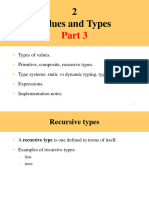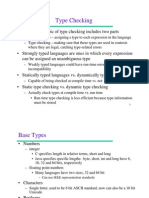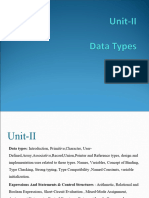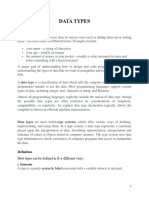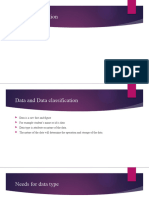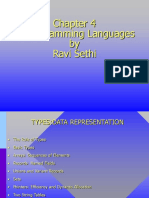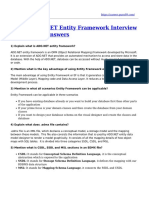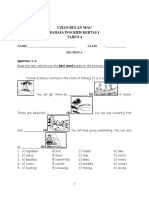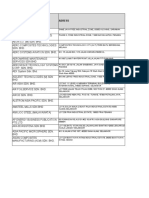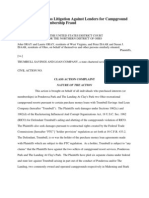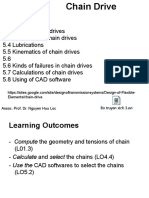100% found this document useful (1 vote)
94 views59 pagesPL 04TypesAndPolymorphism
This document discusses types and polymorphism in programming languages. It begins by distinguishing between static and dynamic types, noting that values have static types defined by the language but dynamic types determined at runtime. It then covers type completeness, describing how functional languages aim to treat all types uniformly as first-class values. The document outlines different types in Haskell, including function, list, tuple, and user-defined data types. It also introduces monomorphic and polymorphic types as well as Hindley-Milner type inference.
Uploaded by
Asutosh MohapatraCopyright
© © All Rights Reserved
We take content rights seriously. If you suspect this is your content, claim it here.
Available Formats
Download as PDF, TXT or read online on Scribd
100% found this document useful (1 vote)
94 views59 pagesPL 04TypesAndPolymorphism
This document discusses types and polymorphism in programming languages. It begins by distinguishing between static and dynamic types, noting that values have static types defined by the language but dynamic types determined at runtime. It then covers type completeness, describing how functional languages aim to treat all types uniformly as first-class values. The document outlines different types in Haskell, including function, list, tuple, and user-defined data types. It also introduces monomorphic and polymorphic types as well as Hindley-Milner type inference.
Uploaded by
Asutosh MohapatraCopyright
© © All Rights Reserved
We take content rights seriously. If you suspect this is your content, claim it here.
Available Formats
Download as PDF, TXT or read online on Scribd
/ 59

